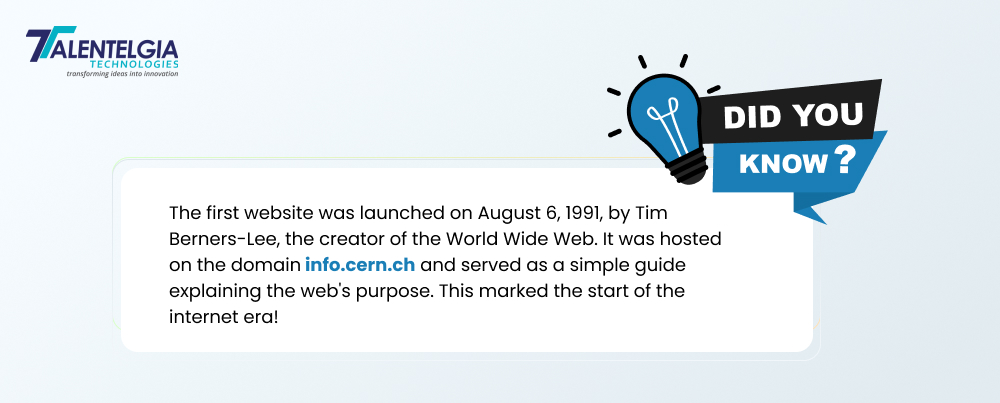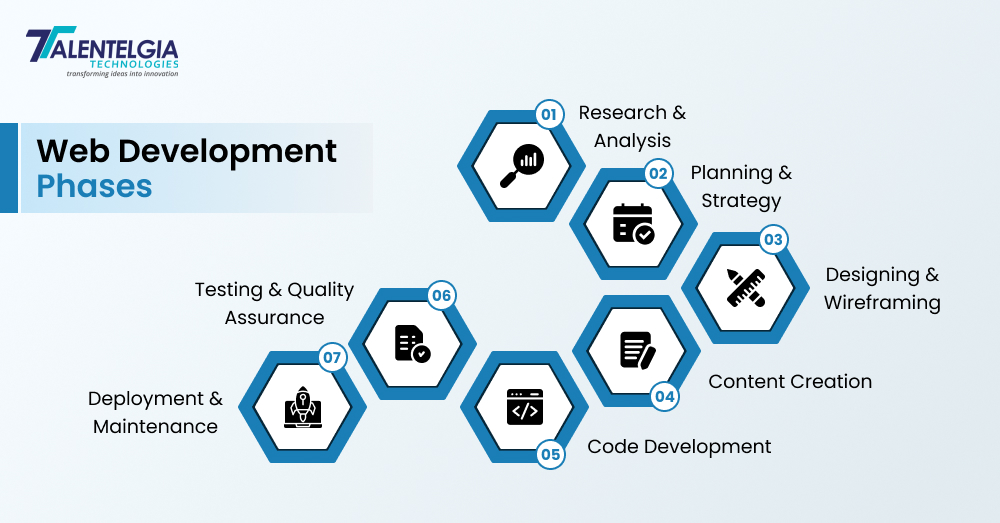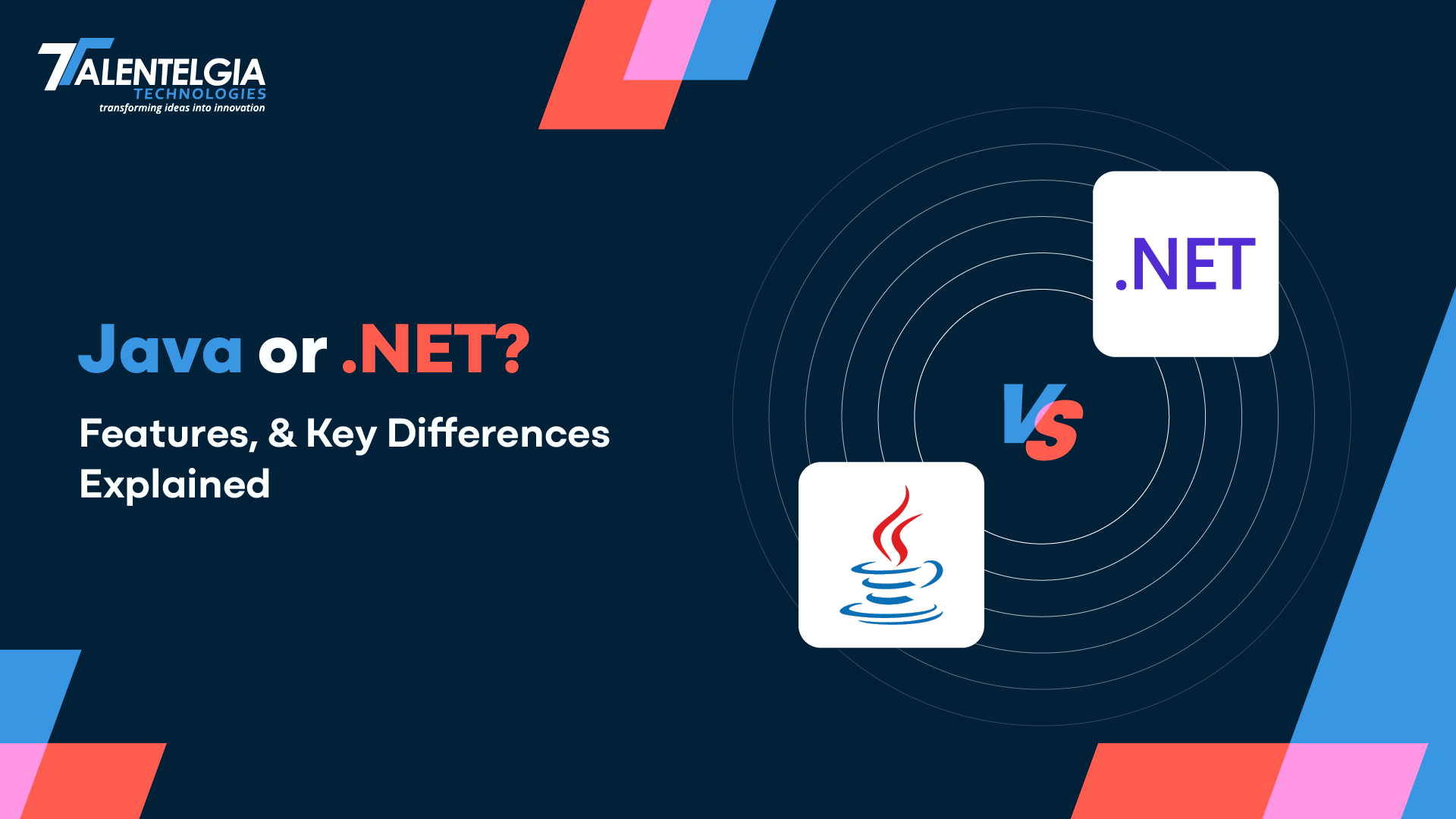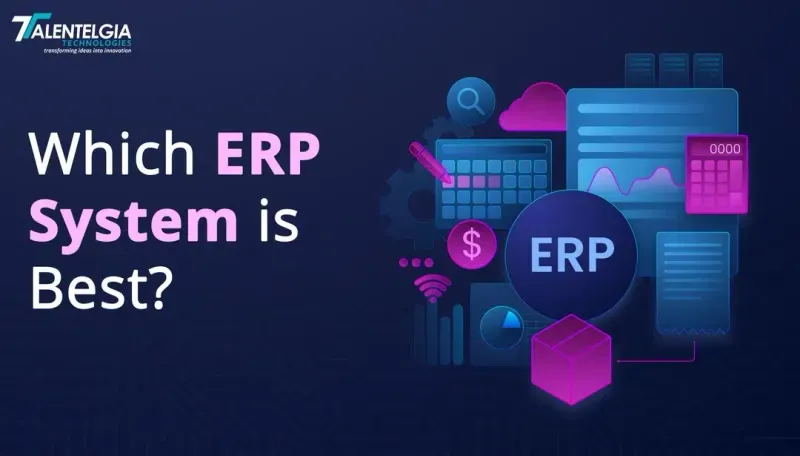Web development is one of the major technical phases where one can showcase the keys to any successful business. A good website acts like the first point of contact where people get informed about your business, interact with your brand, and make their choices. This will be where users will explore your services, contact you, and experience your brand online. However, to make it functional, user-friendly, and holding the essence of your brand, it is an all-encompassing process.
The web development process involves many steps, from buying a domain and designing the front-end layout to infrastructure building of the back-end. All of this needs to be carefully planned by taking minor details so that the end product looks efficient and is easy to navigate through. This guide will take you through every step in the process of website development
What is Website Development?
Web development refers to the process of developing and designing a website and keeping it updated through coding and programming; it also involves fixing the server to make the site work properly.

The web Development process focuses on ensuring that the website works effectively and securely. On the other hand, web design deals with drawing out the layout structure of the site and designing the user interface.
Technologies used in Web Development
The web development process involves several technologies for creating and maintaining a website. These can be divided into two major categories: front-end and back-end technologies; each one is very important to develop a functional and appealing website.
Front-end Technologies
It encompasses creating the part of the website that users interact with. To put it simply, it is the visuals and aesthetic appeal of a website. It also determines the ease with which a user can navigate a website.
- HTML & CSS: HTML is the backbone of web pages, providing structure and defining elements such as headings, paragraphs, and images. CSS stands for Cascading Style Sheets. It is also used to style and lay out web pages, controlling aspects such as colors, fonts, and spacing so that the design is visually appealing and responsive.
- JavaScript: The language of interactivity, running in browsers to provide features dynamically in web applications, such as animations, form validations, and refreshes of content without needing to reload.
- Frameworks and Libraries: These are tools used to ease frontend development; by handling much of the difficult work, like building user interfaces and managing data. Some examples include React, Angular, and Vue.js. You can leverage the expertise of a Vue.js experts, react or a angular.js development company for your website’s frontend development.
Back-end Technologies
It is responsible for managing and processing of data to ensure a hassle-free user experience and website responsiveness. In other words, everything that happens behind the user interface. Important parts include:
- Server-Side Languages: PHP, Python, Ruby, Node.js, etc., are used to write the code for processing users’ requests, conditioning data, and sending responses.
- Databases: Databases like MySQL, PostgreSQL, MongoDB, etc where user data and website content are stored and managed through database development services in a way that they are available and editable when required.
- Web Servers: Software like Apache and Nginx serves the web pages to the users by sending the requests, running server-side code, and sending back the results.
- Frameworks: Back-end frameworks such as Node.js, Express, Python-Django, and Ruby on Rails come with tools and best practices that guide developers to build robust and scalable server-side applications.
All these front-end and back-end technologies are combined to create a seamless, engaging web experience for the users.
Phases of Web Development Process
The website development process is different for every website. Lets understand the process through these steps:

1. Research and Analysis
Objective: Every successful website is based on thorough research and analysis. At this stage, the project’s development aligns with real user needs and the main business goals.
What happens:
- Market Research: Research on competitors and industry trends is made to spot opportunities as well as best practices.
- Audience Analysis: This identifies the users of the website, including who they are and what they want or need.
- Setting aims for example, on increasing sales or making the website more user-friendly.
Outcome: This will outline the whole design and development process, and this project will then be able to set the proper course for the development of the website, having a fixed strategy right through to its end, so that it fully meets user expectations and also links back to business objectives.
2. Planning and Strategy
Purpose: This is done to clearly state how the website will be built and what resources it will take. During this phase, the road map for the project is made.
What Happens:
- Project Scope: Clearly explain what features and content will be included in the website, and what will not.
- Timeline: Provide a timeline inclusive of deadlines and overall milestones that must be met.
- Resource Allocation: Identify the team, tool, and budgetary requirements needed to complete the project.
- Structure of Site: Strategize how the site should be structured including how pages and navigation will be laid out.
Outcome: A full-fledged project plan that should organize resources and timelines for smooth development.
3.Designing and Wireframing
Objective: To have a visual blueprint of the website. This stage brings in an idea of how the site would look and feel. This involves creating both user interface design and user experience designs for intuitive and engaging experience.
What Happens:
- Deployment: Transferring the site from its development environment to a live server where users can gain access to it.
- Monitoring: This means always following through on the performance of the website and fixing any problems that may arise.
- Updates and Maintenance: Do periodic updates, fix bugs, and add new content so the longevity and good functioning of the site can be attained.
Outcome: A clear visual and functional plan for a website guides the development process.
4. Content Creation
Objective: To create and organize all the text, images, and other media for the website. Quality content plays an important building block for users to navigate through the website and achieve website goals.
What Happens:
- Content Creation: Creating captivating and appropriate content that will inspire and interest the targeted audience.
- Content Architecture: Organize the content in an accessible way; facilitate readability and findability.
- SEO Optimization: Use of keywords, among other strategies, that ensure a high ranking and better appearance in search engines.
Outcome: Engaging, well-organized content adds value to the user’s experience, with the objectives of a site.
5. Code and Development
Purpose: This stage aims to turn designs into a responsive website. In this stage, coding should be done and all the elements of the site constructed accordingly.
What Happens:
- Front-end Development: This involves constructing the site with its visual aspects using HTML, CSS, and JavaScript, ensuring the site is interactive.
- Back-end development: Involves creating server-side elements necessary for handling data and interactions on the server through PHP or Python languages. This can be supported by a custom php development company to ensue custom solutions.
- Implementing Functionality: This involves constructing forms, e-commerce functionality, and other features to deliver a functional website.
Outcome: A functional website matching the design and meeting the requirements specified.
6. Testing and Quality Assurance
Purpose: The aim is to ensure that the website has no bugs and works well. This stage will review that everything is functioning as required. This can be done through manual testing or automated testing of the website.
What Happens:
- Functionality Testing: Ensure all features and interactive elements are working as they should.
- Usability Testing: Check the site is easy and intuitive to use.
- Compatibility Testing: Ensure the site functions well in various browsers and devices.
- Performance Testing: Check the website’s speed and responsiveness, ensuring changes are made where necessary.
Outcome: A fine-tuned website that is quick across a range of devices to meet the quality standards of the business.
7. Deployment and Maintenance
Objective: To make the website live, ensuring it continues to work as intended. In this phase, a website goes live and is maintained over time.
What Happens:
- Deployment: Transferring the site from its development environment to a live server where users can gain access to it.
- Monitoring: This means always following through on the performance of the website and fixing any problems that may arise.
- Updates and Maintenance: Do periodic updates, fix bugs, and add new content so the longevity and good functioning of the site can be attained.
Outcome: A live, well-maintained website, offering continued satisfaction of user needs and effective performance. Understanding these stages will help you in managing and executing a successful web development project. The result will be a well-designed, functional, and user-friendly website.
Tips for Developing a Website
- Define Your Purpose: The first thing you want to do is determine your website’s purpose. Whether it’s to attract new customers, sell products, or share information, having a clear purpose will inform and guide design and development decisions.
- Focus on UX: Make sure that navigation through the website is effortless and the speed of page loading is fast. A seamless, smooth user experience design will keep your visitors engaged and help them find whatever they are looking for with ease.
- Responsiveness: More and more website users are now using phones, and the website should work appropriately on every device model. Responsive design for your website simply means that it should look great on any screen size.
- SEO Optimization: Optimizing your website to rank better on search engines such as Bing or Google. Here, you will apply keywords about your products or services on the website, structure proper content, and ensure that it is easy for the search engine to crawl through your website.
- Keep it Simple in Design: Keep your design clean and simple. It annoys users if there is much on your site. Clear-cut layout, obvious visuals, and readable font automatically guarantee that navigation through your website is well and easy.
- Prioritize Speed: The user never likes to wait for a loading website. It is attained by compressing big image files, cutting down unnecessary codes, and most importantly, choosing a good hosting company to give them a good loading speed.
- Security of Your Website: Keep your website secure using an SSL certificate, strong passwords, and updated software. The importance given to security will save your site and users’ data from any kind of threats.
Conclusion
In a successful web development process, planning needs to be well-considered, designs need to be strategized, and front-end and back-end technologies need to be seamlessly integrated into one whole. Each stage is important in providing a fully functional, friendly website that will meet your business objectives from the stage of research and analysis up to deployment and maintenance.
It simply means if one proceeds with this web development process and considers essential aspects regarding user experience, responsiveness, and security, a website capable of taking on your brand through the engagement of its visitors can work for your long-term business success.


 Healthcare App Development Services
Healthcare App Development Services
 Real Estate Web Development Services
Real Estate Web Development Services
 E-Commerce App Development Services
E-Commerce App Development Services E-Commerce Web Development Services
E-Commerce Web Development Services Blockchain E-commerce Development Company
Blockchain E-commerce Development Company
 Fintech App Development Services
Fintech App Development Services Fintech Web Development
Fintech Web Development Blockchain Fintech Development Company
Blockchain Fintech Development Company
 E-Learning App Development Services
E-Learning App Development Services
 Restaurant App Development Company
Restaurant App Development Company
 Mobile Game Development Company
Mobile Game Development Company
 Travel App Development Company
Travel App Development Company
 Automotive Web Design
Automotive Web Design
 AI Traffic Management System
AI Traffic Management System
 AI Inventory Management Software
AI Inventory Management Software
 AI Software Development
AI Software Development  AI Development Company
AI Development Company  AI App Development Services
AI App Development Services  ChatGPT integration services
ChatGPT integration services  AI Integration Services
AI Integration Services  Generative AI Development Services
Generative AI Development Services  Natural Language Processing Company
Natural Language Processing Company Machine Learning Development
Machine Learning Development  Machine learning consulting services
Machine learning consulting services  Blockchain Development
Blockchain Development  Blockchain Software Development
Blockchain Software Development  Smart Contract Development Company
Smart Contract Development Company  NFT Marketplace Development Services
NFT Marketplace Development Services  Asset Tokenization Company
Asset Tokenization Company DeFi Wallet Development Company
DeFi Wallet Development Company Mobile App Development
Mobile App Development  IOS App Development
IOS App Development  Android App Development
Android App Development  Cross-Platform App Development
Cross-Platform App Development  Augmented Reality (AR) App Development
Augmented Reality (AR) App Development  Virtual Reality (VR) App Development
Virtual Reality (VR) App Development  Web App Development
Web App Development  SaaS App Development
SaaS App Development Flutter
Flutter  React Native
React Native  Swift (IOS)
Swift (IOS)  Kotlin (Android)
Kotlin (Android)  Mean Stack Development
Mean Stack Development  AngularJS Development
AngularJS Development  MongoDB Development
MongoDB Development  Nodejs Development
Nodejs Development  Database Development
Database Development Ruby on Rails Development
Ruby on Rails Development Expressjs Development
Expressjs Development  Full Stack Development
Full Stack Development  Web Development Services
Web Development Services  Laravel Development
Laravel Development  LAMP Development
LAMP Development  Custom PHP Development
Custom PHP Development  .Net Development
.Net Development  User Experience Design Services
User Experience Design Services  User Interface Design Services
User Interface Design Services  Automated Testing
Automated Testing  Manual Testing
Manual Testing  Digital Marketing Services
Digital Marketing Services 
 Ride-Sharing And Taxi Services
Ride-Sharing And Taxi Services Food Delivery Services
Food Delivery Services Grocery Delivery Services
Grocery Delivery Services Transportation And Logistics
Transportation And Logistics Car Wash App
Car Wash App Home Services App
Home Services App ERP Development Services
ERP Development Services CMS Development Services
CMS Development Services LMS Development
LMS Development CRM Development
CRM Development DevOps Development Services
DevOps Development Services AI Business Solutions
AI Business Solutions AI Cloud Solutions
AI Cloud Solutions AI Chatbot Development
AI Chatbot Development API Development
API Development Blockchain Product Development
Blockchain Product Development Cryptocurrency Wallet Development
Cryptocurrency Wallet Development About Talentelgia
About Talentelgia  Our Team
Our Team  Our Culture
Our Culture 
 Healthcare App Development Services
Healthcare App Development Services Real Estate Web Development Services
Real Estate Web Development Services E-Commerce App Development Services
E-Commerce App Development Services E-Commerce Web Development Services
E-Commerce Web Development Services Blockchain E-commerce
Development Company
Blockchain E-commerce
Development Company Fintech App Development Services
Fintech App Development Services Finance Web Development
Finance Web Development Blockchain Fintech
Development Company
Blockchain Fintech
Development Company E-Learning App Development Services
E-Learning App Development Services Restaurant App Development Company
Restaurant App Development Company Mobile Game Development Company
Mobile Game Development Company Travel App Development Company
Travel App Development Company Automotive Web Design
Automotive Web Design AI Traffic Management System
AI Traffic Management System AI Inventory Management Software
AI Inventory Management Software AI Software Development
AI Software Development AI Development Company
AI Development Company ChatGPT integration services
ChatGPT integration services AI Integration Services
AI Integration Services Machine Learning Development
Machine Learning Development Machine learning consulting services
Machine learning consulting services Blockchain Development
Blockchain Development Blockchain Software Development
Blockchain Software Development Smart contract development company
Smart contract development company NFT marketplace development services
NFT marketplace development services IOS App Development
IOS App Development Android App Development
Android App Development Cross-Platform App Development
Cross-Platform App Development Augmented Reality (AR) App
Development
Augmented Reality (AR) App
Development Virtual Reality (VR) App Development
Virtual Reality (VR) App Development Web App Development
Web App Development Flutter
Flutter React
Native
React
Native Swift
(IOS)
Swift
(IOS) Kotlin (Android)
Kotlin (Android) MEAN Stack Development
MEAN Stack Development AngularJS Development
AngularJS Development MongoDB Development
MongoDB Development Nodejs Development
Nodejs Development Database development services
Database development services Ruby on Rails Development services
Ruby on Rails Development services Expressjs Development
Expressjs Development Full Stack Development
Full Stack Development Web Development Services
Web Development Services Laravel Development
Laravel Development LAMP
Development
LAMP
Development Custom PHP Development
Custom PHP Development User Experience Design Services
User Experience Design Services User Interface Design Services
User Interface Design Services Automated Testing
Automated Testing Manual
Testing
Manual
Testing About Talentelgia
About Talentelgia Our Team
Our Team Our Culture
Our Culture

















 Write us on:
Write us on:  Business queries:
Business queries:  HR:
HR: 




